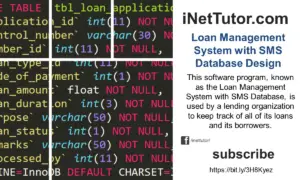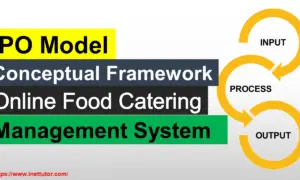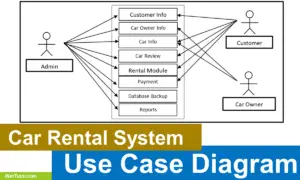Point of Sale and Inventory System Conceptual Framework
This post will walk you through the process of developing a conceptual framework for a capstone project titled Point of Sale and Inventory System using PHP. The input, process, output (IPO) model was used to develop the conceptual framework for the investigation.
About the Project
Table of Contents
The way businesses function has shifted as a result of technological advancements. Businesses can completely optimize their services and operations by using computer technology and the internet. Big and small firms were able to increase their business efficiency and overall consumer experience by utilizing various technologies. The point of sale and inventories play an important role in the company. Business transactions take place at the point of sale (POS). The usage of a POS and inventory system will boost the company’s productivity and efficiency. The rapid advancement of technology has resulted in the expansion of point-of-sale and inventory systems, both of which give extra capabilities that businesses may integrate into their operations. The capstone project, titled “Point of Sale and Inventory System Using PHP,” is geared toward the business world, notably pharmacies and drugstores. Drug-related firms will be able to automate sales operations, as well as track sales and inventories, according to the project.
What is a conceptual framework?
A conceptual framework is a set of concepts and ideas that provide a broad, abstract understanding of a specific topic or subject. In the context of an IT capstone project, a conceptual framework is a theoretical foundation that guides the research and development of the project. It helps to define the key concepts and ideas that are relevant to the project and to provide a structure for understanding and analysing the problem or opportunity being addressed.
The importance of a conceptual framework in an IT capstone project lies in its ability to help the researcher or developer to focus their efforts and to provide a clear and coherent basis for the project. By providing a set of guiding principles and a theoretical foundation, a conceptual framework can help to ensure that the project is grounded in a solid understanding of the relevant concepts and ideas, and that it is focused on addressing the problem or opportunity in a meaningful and impactful way. Additionally, a conceptual framework can help to provide a common language and understanding for the project team, which can facilitate communication and collaboration among team members. Overall, a conceptual framework is an essential element of an IT capstone project and can help to ensure that the project is well-planned, well-executed, and ultimately successful.
Objectives of the Study
- To create a point-of-sale and inventory system for drugstores that will allow for faster and easier transactions.
- To provide clients with various payment options.
- To increase a company’s customer base.
- To automate the drugstore’s sales processes.
- To keep track of sales and inventories online.
- To easily generate reports on the business’s transactions that have been processed and completed.
Conceptual Framework Diagram
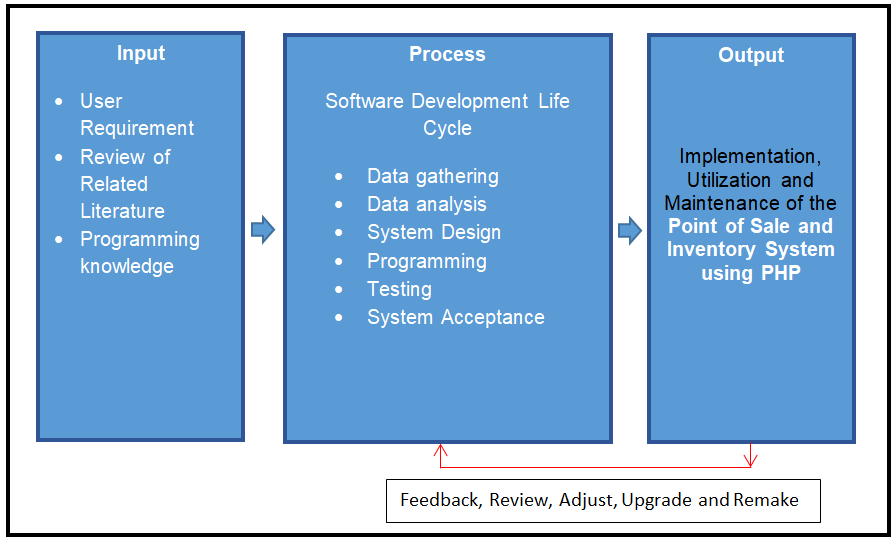
The figure above depicts the project’s conceptual structure, entitled Point of Sale and Inventory System using PHP. The input, process, and output (IPO) model is used.
Input
User Requirement – This is the area where the researchers obtained information about the system’s unique properties. It is vital to consider their opinions because they will be using the Point of Sale and Inventory System using PHP.
Review of Related Literature – The researchers have conducted investigations and studies in the proposed system’s region. This procedure will be useful to the researchers as they develop the project or system.
Programming Knowledge – This is where the researchers can now use their knowledge in programming to design and develop the system.
Process
This is the part where the researchers will select and choose the best software development life cycle model for the project.
Data gathering
During this phase, the study’s researcher gathered all conceivable needs for the system’s development, including those obtained from the system’s beneficiaries, the end users. The survey questionnaire was created by the researcher and was validated by specialists. The surveys were used to collect information in order to improve the performance of the proposed system for future community use.
Data analysis
Consultation is used to gather requirements from the end user and generate ideas. We also administered a survey questionnaire, which was accepted by the three experts (IT Expert, English Grammarian, and Researcher). These questionnaires also functioned as our data collection tool for evaluating the performance of the manual system, which served as the foundation for creating our suggested system.
System Design
During this phase, the prototype and planned system features are developed. A concrete grasp of how the system will work is also formed. In this section, we identify all of the necessary system inputs and outputs, as well as the design of data, processes, and interfaces.
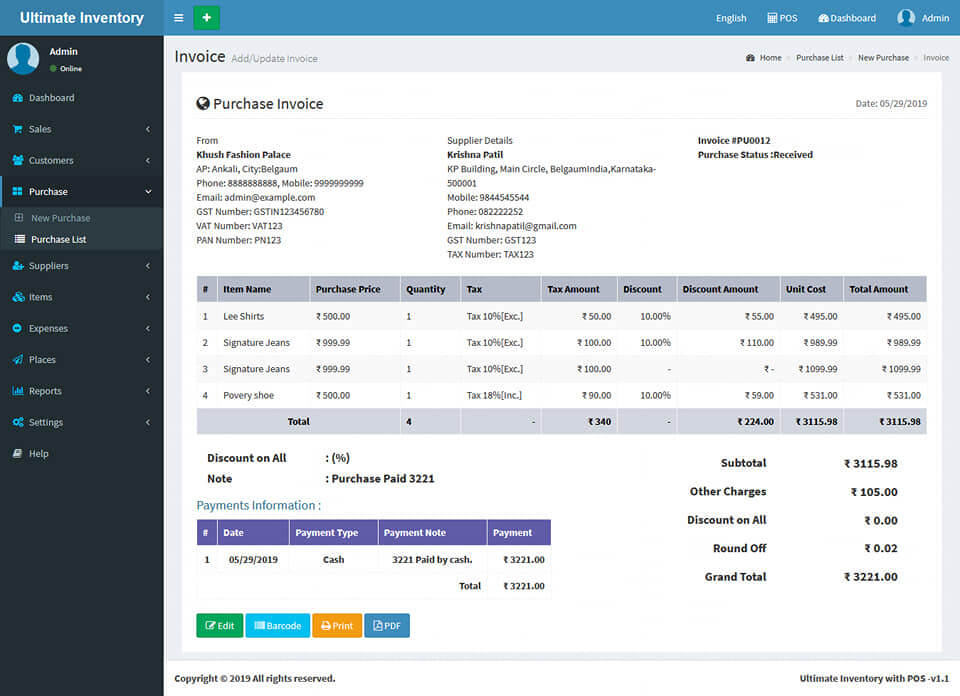
Programming
In this stage, we materialized the whole idea of the software to be designed. We created the program for the proposed system. The actual coding of the software is based on the system design and the requirements needs to be met. This is where the proper execution of the previous stages ensures a smooth implementation.
Program testing
In this phase, the researcher performed series of testing to check for any possible problems may arise during implementation and operation of the software and if the specification has been met.
System acceptance
This is the final stage, where the system is being installed and to be maintained after actual implementation. One must take into consideration are the hardware and the software requirements for the proper installation of the system. As part of the acceptance of this phase, the client is required to have a user training to enable them to familiarize fully the whole system.
Output
After all of the relevant procedures have been completed, the project comes to life and is carried out in the actual world. A new project is born, and it will be maintained for the long-term existence of the project. At this point, the Barcode Based Document Control and Management System will be implemented, used, and maintained.
Summary
The input, process, and output (IPO) model will be used to provide the conceptual framework for the investigation. The researchers determine the project’s user needs and assess relevant literature for the study before utilizing their programming skills to develop the project. To complete the system, the researchers will employ the Software Development Life Cycle (SDLC) technique. Its purpose is to ensure that the project progresses through several stages in order to give comprehensive functionality that meets the expectations of the users. The Point of Sale and Inventory System using PHP will be implemented, used, and maintained as a result of this project.
Readers are also interested in:
Point of Sale Application POS Use Case Diagram
POS System Using C#.Net Winforms and MS Access Free Source code
Point of Sale System (POS) ER Diagram
Point of Sale (POS) System in Python
You may visit our Facebook page for more information, inquiries, and comments. Please subscribe also to our YouTube Channel to receive free capstone projects resources and computer programming tutorials.
Hire our team to do the project.
